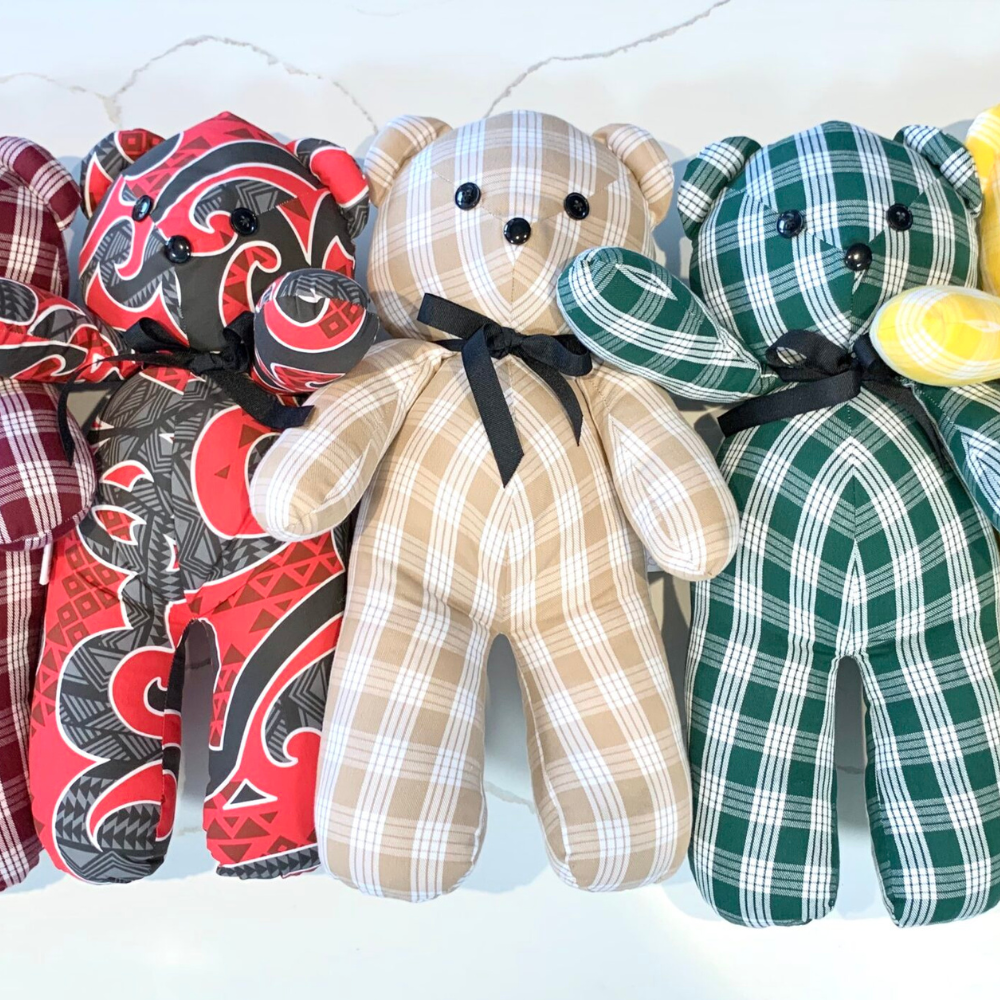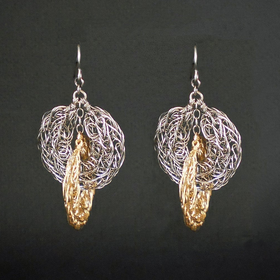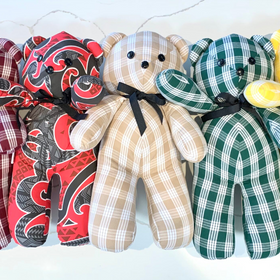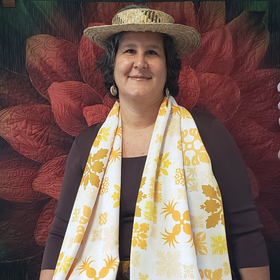
Hand-sewn Palaka Teddy Bears
Contact directly after purchase to specify color and pattern. Image may not reflect colors in stock.
The history of palaka in Hawaii is really a reflection of Hawaii’s past, from its first European interaction to the present. Pre-European Hawaiians dressed in tapa (also known as kapa), a beaten cloth made from paper mulberry, but after European contact, they rapidly adopted harder-wearing woven cloth and dress. It is one garment in particular, a sailor’s shirt or “frock” as it was called, that was apparently transliterated as palaka, and the name shifted to mean the coarsely woven fabric from which the shirt was made. Most recently, the term palaka became identified with the specific cotton twill blue and white block design we know today. At least one source credits the name as a simple transliteration of “block,” but this is debatable.
Originally, the palaka fabric was imported from England and America. Research on early American fabrics shows many similar plaid patterns. Hawaiian and Portuguese workers adopted palaka shirts in the 1890s, and by 1922, palaka clothing was being produced for the plantation stores. The Japanese who came to the islands between 1885 and 1924 to work the fields brought their own clothing traditions to Hawaii; among them were skilled tailors who purchased palaka fabric and made the long-sleeved palaka jackets whose checked patterns were reminiscent of their own traditional checked goban-ji fabric.
Japanese workers going off to work in the cane fields dressed in denim pants and long-sleeved palaka tops, a necessary protection from the sharp-edged cane leaves. Palaka tops were similarly worn in the pineapple fields to protect workers from the sun and the spiky pineapple leaves.
Palaka fabric continues to be available today, serving a niche market of local residents, but it is a far cry from the tough cotton twill of days past. These days, it is much lighter in weight and is a cotton/synthetic blend. It is also now available in a variety of colors.






